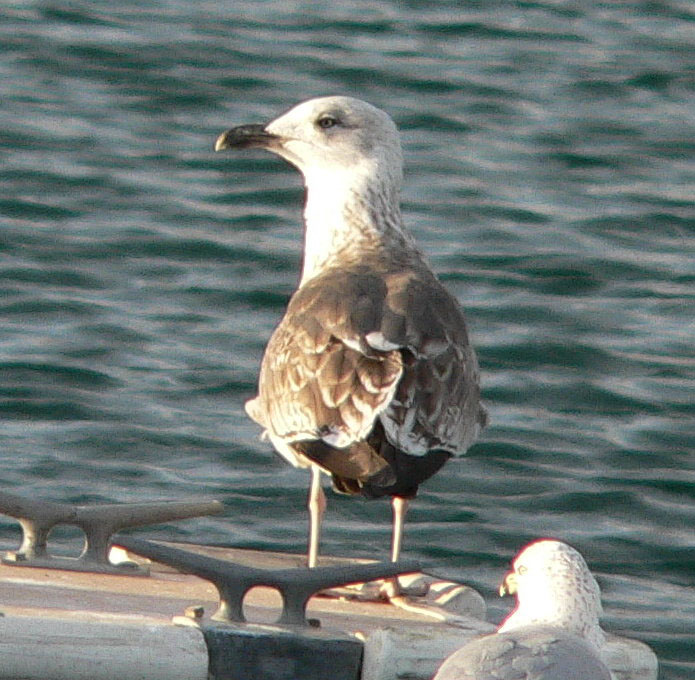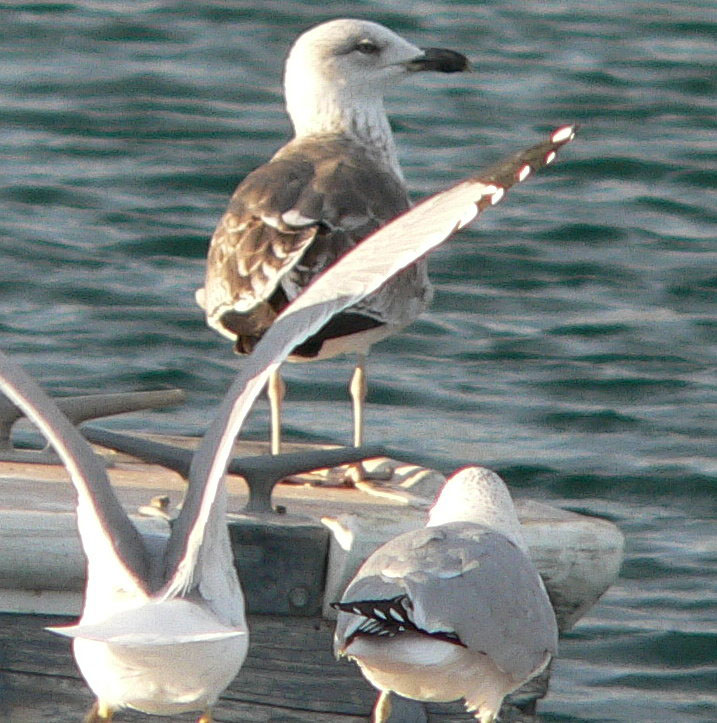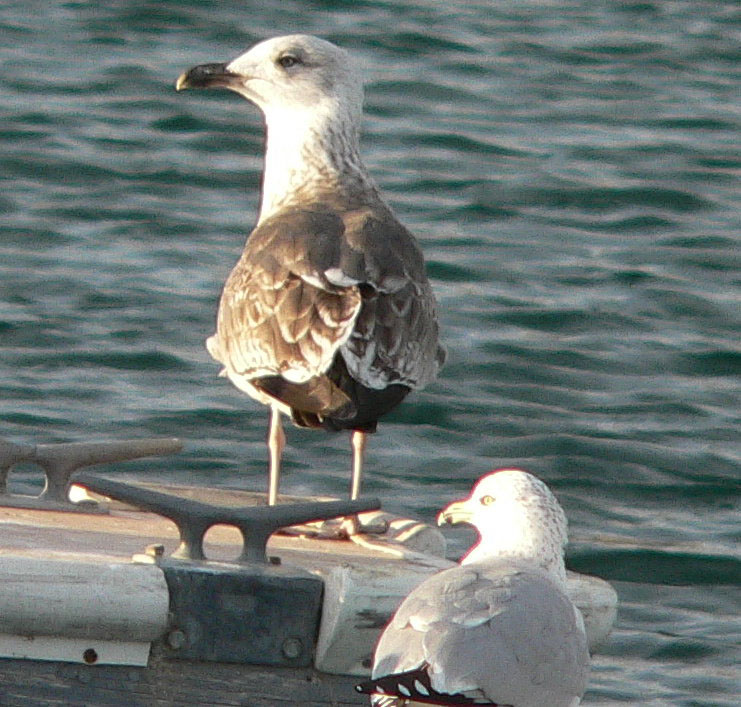 |
 |
|||||||||||||||||||||
|
||||||||||||||||||||||
Lesser Black-backed Gull, (Larus fuscus), Katherine Landing, Mohave County
Here is the original description by Bill Grossi: The bird I saw was at least as large as the nearby Herring Gulls. The mantle and scapulars are dark gray, which looked almost black in the strong light. The bill is all dark, but with a touch of yellow at the base and tip. The eye is whitish yellow, and the legs appear very light yellow. The tail was black with lighter, streaked upper tail coverts. The head is mostly white with brownish streaks on the neck and underparts.
Since the bird has light yellow feet and a dark mantle, it can only be Yellow-footed or Lesser Black-backed Gull. Either would be a potential second state record. Gull experts who have examined the photographs agree it is a second cycle Lesser-black Backed Gull. These are the main ID points: Yellow-footed is an "advanced" gull so this plumage (gray mantle, brown wing coverts) would be a first cycle Yellow-footed or a second cycle Lesser Black-backed. This is not a Yellow-footed because: 1) The eye is too yellow for a first cycle Yellow-footed. In Yellow-footed the eye only turns light when it is older. However, second cycle Lesser Black-backed would have a very light eye. 2) On Yellow-footed Gull the coverts are solid brown or gray. This bird has too much patterning in the coverts. This pattern is typical of Lesser Black-backed. 3) Yellow-footed has a large, bulbous tipped bill. This bill is on the large end for Lesser Black-backed but is too small and parallel-sided for Yellow-footed. 4) It does not look large enough to be a Yellow-footed which should be distinctly larger than a Herring Gull (unless it is a very small female Yellow-footed). It is on the large side for Lesser Black-backed, so it probably a large male. Finally, the primaries have rounded tips which indicates it is a second cycle gull. First cycle gulls have pointed primaries. Second cycle Yellow-footed looks nearly like an adult, whereas this bird is typical for second cycle Lesser Black-backed.
These arguments suggest this bird is most likely a large male, second cycle Lesser Black-backed Gull, a potential second record for Arizona if accepted by the Arizona Bird Committee.




25 February 2008 photos by Bill Grossi
|
©2005
|
HOME | | | REPORT SIGHTINGS | | | PHOTOS | | | BIRDING | | | JOURNAL | | | ABOUT US | | | CHECKLISTS | | | AZ BIRD COMMITTEE | | | EVENTS | | | LINKS |
